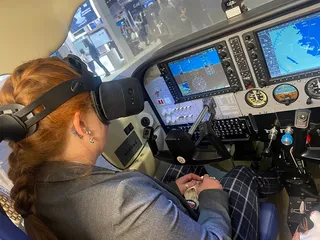US and Saudi Arabia Conduct UAS Exercise
Contact Our Team
For more information about how Halldale can add value to your marketing and promotional campaigns or to discuss event exhibitor and sponsorship opportunities, contact our team to find out more
The Americas -
holly.foster@halldale.com
Rest of World -
jeremy@halldale.com

Red Sands 23.2 highlighted the significant progress the United States and the Kingdom of Saudi Arabia have made toward defeating Unmanned Aerial Systems (UAS) that pose a threat from adversaries. Gen. Michael Kurilla, commander, U.S. Central Command, and Gen. Fayyad al-Ruwali, Chief of General Staff, Kingdom of Saudi Arabia, along with other leaders from both militaries, observed the second exercise iteration by the Red Sands Integrated Experimentation Center.
Red Sands 23.2 is the culmination of months of rapid prototyping and continued development building off the earlier exercise. This iteration of Red Sands included training, operational demonstrations, and testing of nine systems employing various kinetic and non-kinetic techniques to destroy or disable UASs.
“Rapid development sprints, as demonstrated in Red Sands 23. 2, allow us to tackle the most challenging military problems and realize solutions to emergent threats more rapidly than traditional development,” said Gen. Kurilla. “Doing this in conjunction with our close Saudi partners adds to the effectiveness of this developing technique and allows us to achieve our goals faster.”
From the U.S. side, the U.S. Army Central Task Force 39 led the Red Sands 23.2 live fire phase at the Shamal-2 Range in northeastern Saudi Arabia. TF 39’s mission is finding and testing innovative capabilities and techniques to counter adversary UAS for U.S. Army Central. In partnership with their Saudi counterparts, TF 39 worked with both military and commercial vendors to demonstrate and test promising emergent capabilities aimed at countering these systems.
Future iterations of Red Sands exercises will build on successes and knowledge gained in Red Sands 23.2 by U.S. and Saudi Armed Forces as they continue to work together to solve challenging military problems.


.jpeg/r%5Bwidth%5D=320/63949ba0-5ccd-11f0-a7e0-e716671d4c80-a-professional-lifestyle-advertisement-f_eaZrd-beQ9aW5PqdGQZ_Jg_6_2H0ZNeRRqIWWtcGT_k3g%20(1).webp)